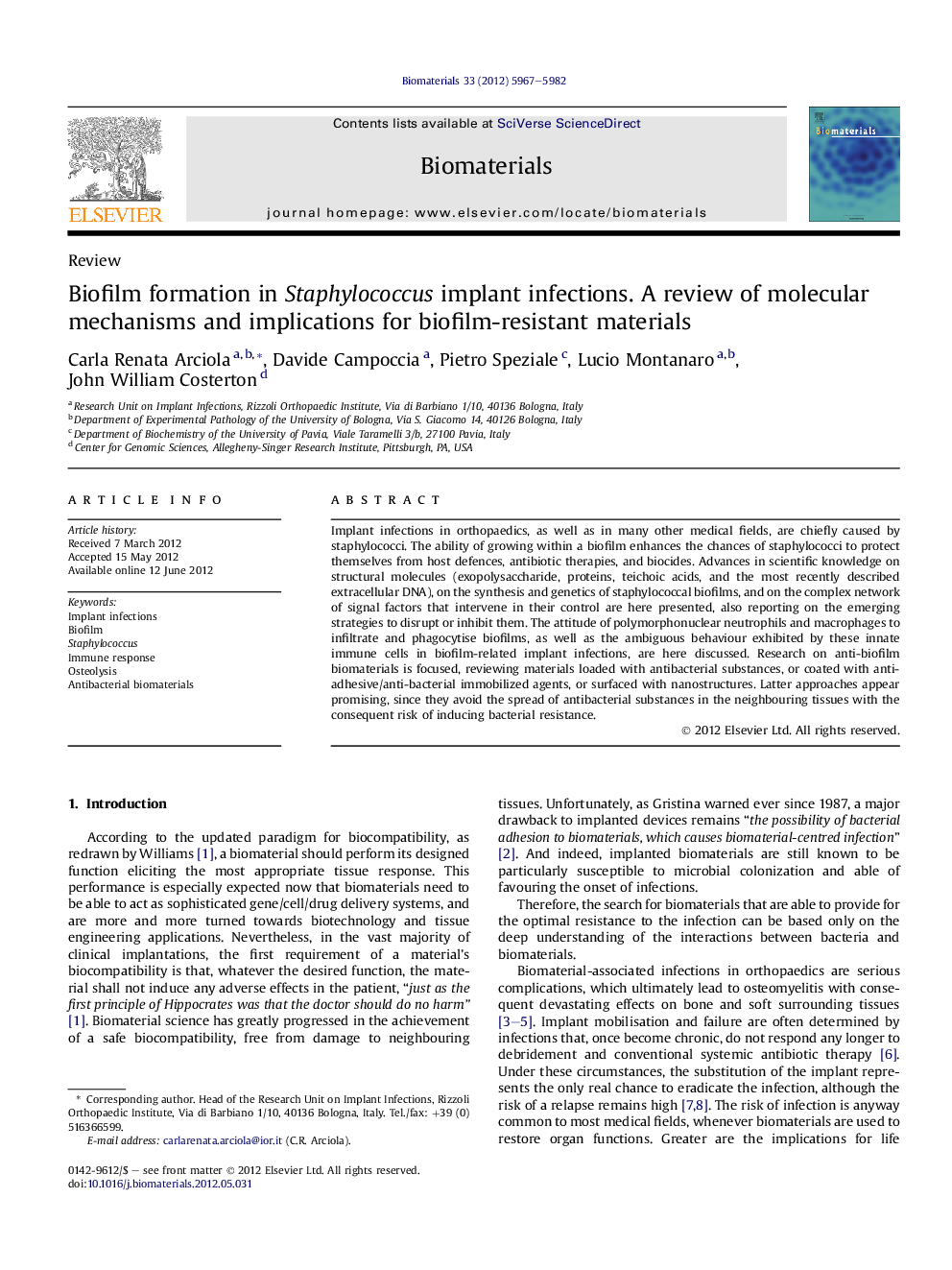| Article ID | Journal | Published Year | Pages | File Type |
|---|---|---|---|---|
| 6697 | Biomaterials | 2012 | 16 Pages |
Implant infections in orthopaedics, as well as in many other medical fields, are chiefly caused by staphylococci. The ability of growing within a biofilm enhances the chances of staphylococci to protect themselves from host defences, antibiotic therapies, and biocides. Advances in scientific knowledge on structural molecules (exopolysaccharide, proteins, teichoic acids, and the most recently described extracellular DNA), on the synthesis and genetics of staphylococcal biofilms, and on the complex network of signal factors that intervene in their control are here presented, also reporting on the emerging strategies to disrupt or inhibit them. The attitude of polymorphonuclear neutrophils and macrophages to infiltrate and phagocytise biofilms, as well as the ambiguous behaviour exhibited by these innate immune cells in biofilm-related implant infections, are here discussed. Research on anti-biofilm biomaterials is focused, reviewing materials loaded with antibacterial substances, or coated with anti-adhesive/anti-bacterial immobilized agents, or surfaced with nanostructures. Latter approaches appear promising, since they avoid the spread of antibacterial substances in the neighbouring tissues with the consequent risk of inducing bacterial resistance.
